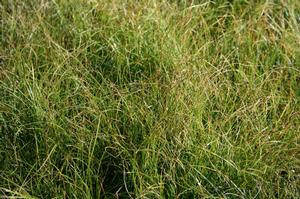New Moon Nurseries
Carex rosea
Rosy sedge, Curly wood sedge
Native to North America
FIRST IMPRESSIONS: Carex rosea is a petite perennial sedge that forms 1’ mounds of narrow shaggy foliage. The leaves are deep green and semi-evergreen. In late spring green star-shaped flower spikes are displayed above the foliage. This sedge occurs in shade to partly shaded woods in wet to dry soil. It also has great landscape potential as a woodland groundcover or lawn substitute.
HABITAT & HARDINESS: Carex rosea is native to eastern North America from Nova Scotia to Florida and west to Manitoba and Texas.
Plants are indigenous to bottomlands, deciduous upland forests, dry to mesic oak woods, rich ravines, wood-edges, moist stream banks and pond margins.
Hardy from USDA Zones 4-8.
PLANT DESCRIPTION: Carex rosea grows in compact clumps of delicate arching foliage. The crown expands to form larger clumps but this sedge is not noticeably rhizomatous.
Leaves are deep green and almost 1/8” wide. The narrow blades are evergreen through most of the range.
In spring upright culms bear 4-8 rounded star-like spikelets that are widely spaced rather than clustered. The terminal spikelet contains both staminate and pistillate florets. The lower spikelets have only pistillate florets.
The spikelets look somewhat like green starbursts due to the presence of 7-14 spreading perigynia. The interesting pistillate florets within the perigynia have threadlike rosy pink coiled stigmas that protrude from the top.
This sedge is about 1’ tall with an equal or wider spread.
CULTURAL & MAINTENANCE NEEDS: Carex rosea prospers in dry, moist or wet woodlands including difficult dry shady sites. The preferred exposure is the bright shade or part sun found at woods edge. Plants will tolerate full shade but will not fill in as quickly.
Established plants are drought tolerant, pest resistant and unpalatable to deer and other herbivores.
In garden situations, plants should be cut to the ground during late winter before new growth is initiated.
LANDSCAPE USES: Carex rosea is a valuable Lawn Substitute, Groundcover or Edging Plant for a Shade Garden. This sedge is lovely when Grouped or Massed with spring wildflowers. The unique leaf texture allows this sedge to serve as an eye catching Accent. Plants provide Erosion Control and Winter Interest and are appropriate for Deer Resistant Plantings, Low Maintenance Plantings, Rain Gardens and Wildlife Gardens.
This sedge is an excellent native substitute for the popular Asian groundcovers Liriope muscari and Ophiopogon japonicus.
COMPANION & UNDERSTUDY PLANTS: Suitable garden companions for Carex rosea could include woodland wildflowers and ferns like Antennaria neglecta, Chrysogonum virginianum, Heuchera americana ‘Dale’s Strain’, Iris cristata, Phlox divaricata, Spigelia marilandica, and Polystichum acrostichoides.
This species is similar in appearance and cultural needs to Carex radiata, Carex appalachica and Carex pensylvanica.
TRIVIA: Two of this sedge’s common names (Rosy Sedge and Curly Wood Sedge) refer to the tiny pink coiled stigmas that protrude from the perigynia for a short time in late spring or early summer.
Carex rosea is very similar to Carex radiata. The two often grow in the same woodlands but C. rosea is found in drier sites with Quercus alba, Q. rubra or Q. macrocarpa. Carex radiata is found in wetter sites often with Quercus bicolor. C. rosea has thicker red coiled stigmas. C. radiata has slender straighter red stigmas.
Height:
1 ftSpread:
1 ftSpacing:
18-24 inUSDA Hardiness Zone:
4-8Bloom Color:
GreenCarex rosea Characteristics
Attributes
- Bog
- Rain Garden
- Naturalizing
- Ground Cover
- Interesting Foliage
- Evergreen
- East-Coast Native
- Drought Tolerant
Exposure
- Full Sun to Partial Shade
Deer Resistant
- Deer Resistant
Flowering Months
- October
- September
- August
- July
- June
- May
Foliage Color
- Green
Grass Season
- Cool Season Grass
Groundcover Foot-Traffic Tolerances
- Light
Growth Rate
- Medium
Lawn Replacement or Groundcover
- Groundcover
- Lawn Replacement
Soil Moisture Preference
- Moist to Dry
